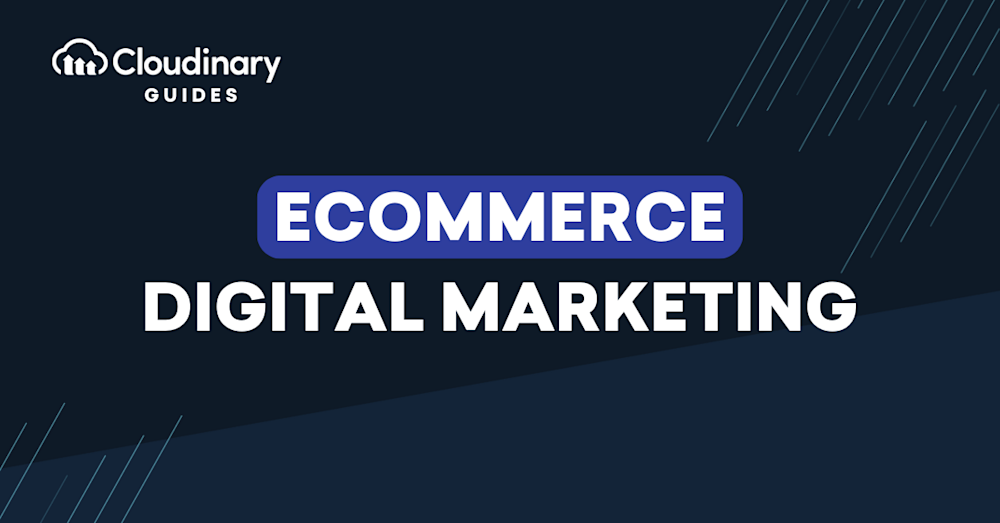What is eCommerce and Digital Marketing?
Electronic commerce (eCommerce), part of the broader economic field of digital commerce, enables business owners to sell products and services online. E-commerce online marketing is the practice of using digital channels and strategies to promote products or services, attract target customers, and drive sales for online stores. This multifaceted approach includes optimizing websites for search engines (SEO), creating valuable content, leveraging social media platforms, running paid advertising campaigns, and engaging customers through email marketing, influencer partnerships, and loyalty programs.
The primary goals of e-commerce online marketing are to drive relevant traffic, increase sales conversions, boost brand awareness, and foster customer loyalty. By combining tactics such as content marketing, conversion rate optimization (CRO), and user-generated content, businesses can stand out in the competitive online marketplace, build lasting customer relationships, and achieve sustainable growth.
In this article, we’ll cover the basics of what eCommerce digital marketing is, what makes up different fields within it, examples of ecommerce online marketing in action, and some tips to get you started.
In this article:
4 Types of E-Commerce Business Models
Let’s take a brief but informative dive into the four key e-commerce business models that shape the digital marketplace:
- Business to Consumer (B2C) – The B2C e-commerce model is one of the most recognized, as it covers most online retail businesses. In this model, companies sell their products or services directly to consumers. Digital marketing is crucial in the B2C model, helping to optimize customer journeys, increase product visibility, and strengthen brand reputation. Common strategies include Search Engine Optimization (SEO), personalized email campaigns, and social media ads targeting individuals based on their preferences or past purchasing behavior.
- Business to Business (B2B) – The B2B model consists of transactions between two businesses, commonly involving products where large quantities are dealt with, or SaaS (Software as a Service) offerings. In B2B digital marketing, marketers often use methods tailored to meet the needs of professional buyers and organizations. Content marketing, SEO, and LinkedIn advertising are common strategies used in B2B digital marketing.
- Consumer to Consumer (C2C) – The C2C e-commerce model enables transactions between consumers, typically through third-party platforms such as eBay or Craigslist. Digital marketing in C2C focuses on strategies to boost platform visibility, build user trust, and streamline transactions. Common techniques include social media advertising, influencer collaborations, and managing online reputations.
- Consumer to Business (C2B) – The C2B model flips the script on traditional business models, with consumers providing services or value to businesses. Examples include freelance services, crowdsourcing platforms, or online reviews. Digital marketing in the C2B space is often aimed at enhancing the platform’s interface and exposure to businesses that can use the consumer-sourced services. It also focuses on attracting more customers to offer their services on the platform. SEO, targeted B2B advertising, and UX/UI optimization are common in C2B digital marketing.
Understanding these e-commerce models is essential for crafting the right digital marketing strategy. Depending on the e-commerce model your business falls into, your digital marketing strategies, target audiences, and ways of communication will significantly vary.
Channels for Marketing eCommerce
Email marketing is a key digital marketing channel that offers easy automation. You can create campaigns that send targeted emails to subscribers based on their interests. However, managing email lists properly is crucial to maintaining consumer trust. For example, customers who value data privacy may be reluctant to receive promotional emails.
Content
Content marketing includes written and visual content like photos, videos, and infographics. This content engages consumers on blogs and other platforms to increase customer conversion rates and raise brand awareness. This marketing approach is low-cost but often takes a long time to generate results.
Social Media
Many brands manage social media pages and post regularly to engage with consumers and build their online presence. Social media marketing campaigns vary depending on the brand and platform, as not every network will be a perfect fit. The success of an eCommerce campaign, particularly on social media, depends on compelling visuals that attract traffic.
SEO and Paid Advertising
Paid advertising services like pay-per-click and SEO help reduce the marketing burden on internal teams. They help generate fast results and require less effort. SEO is an organic marketing approach that customizes content according to the most searched keywords to make it more visible on search engines.
Influencers
Influencers support various eCommerce marketing techniques by engaging with audiences and establishing trust.
Display Advertising
Display advertising utilizes visual formats, such as banner ads, to promote products across apps, websites, and social media platforms. These ads use images, text, and videos to grab the attention of potential customers, enabling brands to attract new clients and maintain relationships with existing ones.
Related content: Read our guide to digital transformation in retail
Loyalty Programs and Customer Retention
Beyond acquiring new customers, fostering loyalty is a vital component of e-commerce online marketing. Loyalty programs reward repeat customers with exclusive offers, discounts, or early access to new products, encouraging them to make additional purchases and strengthening long-term relationships. By implementing customer retention strategies (such as personalized recommendations, post-purchase follow-ups, and VIP clubs) online stores can increase lifetime value and build a strong, engaged customer base.
Conversion Rate Optimization (CRO)
Conversion rate optimization focuses on improving the website and shopping experience to increase the percentage of visitors who complete a purchase. This can involve A/B testing landing pages, streamlining the checkout process, optimizing product pages, and using persuasive calls-to-action. CRO ensures that marketing efforts translate into measurable sales growth and maximizes the return on investment for all digital marketing activities.
eCommerce Digital Marketing Examples: Acquisition
Content Marketing
Blogs are a useful way to share stories, answer customer queries, and notify consumers of new products. Targeted, SEO-optimized blog posts are the best way to provide comprehensive information and engage customers. For instance, Au Lit FineLinens successfully used blog posts to sell bedding products, with informative articles providing tips for a better sleep experience.
Social Media Marketing
Social media provides an effective way to connect with consumers, grow your brand’s audience, and generate leads. It allows you to share various types of content, such as product images, behind-the-scenes videos, and links to press releases.
For instance, Etsy leveraged this strategy and embraced all the major social media platforms (Instagram, Facebook, Twitter, Pinterest, etc.). Etsy posts videos and images of its products with calls-to-action captions to attract customers and promote sales.

Video-Based Marketing
Video content is a popular medium for content marketing, helping to engage with consumers. Short videos and animations can help captivate your audience and convey information in a convenient format, even offering entertainment value to attract attention. For example, the
eCommerce apparel platform Nine Line adopted video-based marketing to showcase products with humorous, 30-second YouTube videos.
Nine Line Apparel – Relentlessly Patriotic & Still Veteran Owned
eCommerce Digital Marketing Examples: Conversion Optimization
Here are some examples of how eCommerce marketing can help optimize conversion.
Cart Nudges
A cart or checkout nudge is a cue that implicitly directs customers toward the checkout. For instance, this Calvin Klein nudge suggests the product is in limited stock, urging customers to purchase now.

Cart nudges shouldn’t be forceful or interfere with the shopping experience but can boost the overall marketing efforts when strategically placed.

In this example, the goal gradient at the top of the page encourages people to move forward by showing their progress within the shopping process.
Recommendations
Product recommendations help increase sales by cross-selling based on users’ shopping history. For instance, you can recommend similar products.

These recommendations help shoppers compare products and guide decision-making. Some eCommerce stores offer recommendations for complementary products, such as additional items to complete the outfit.
Exit-Intent Overlays
An exit-intent overlay can prevent potential shoppers from leaving the eCommerce website by offering discounts and promotions, announcing new products, or nudging customers to subscribe.
For example, Wilson Street uses an exit-intent overlay that encourages visitors to join a savings club and receive 15% off their first order.

Tips for a Successful eCommerce Digital Marketing Strategy
Focus On the Shopping Cart
Customers might abandon their shopping carts if they’re uncertain about the brand, the product, or the delivery process. It’s important to build trust and show them they can make a purchase from your eCommerce store with confidence.
You can minimize shopping cart abandonment in several ways, including providing money-back guarantees, offering superior delivery options, displaying a simple and clear return policy, and giving immediate access to customer support.
Follow Up After the Purchase
After a user completes a purchase, sending a follow-up email can help nurture the customer relationship and gauge their interest in other products. To continue engaging with them, it’s important to request their consent to receive emails, which can be done by encouraging them to sign up during checkout.
A post-purchase follow-up email can also help show customers that your brand cares about them and wants them to use your product successfully. It lets you get feedback on their purchase experience, reducing friction for future customers. Common examples include asking customers for a product review or offering content on how to use the product.
Leverage User-Generated Content (UGC)
UGC provides brands with free promotional content created by users. It helps drive traffic to eCommerce stores and build an authentic following of users already interested in your products. It enables you to promote and share your business by engaging with customers and creating meaningful relationships.
Here are effective methods you can use to drive UGC:
- Competitions—customers who enter competitions can win by displaying your products in some meaningful way online.
- Review platforms—ask customers to share feedback about products they purchased through your eCommerce website.
- Social media hashtags—ask users to submit content using a specific branded hashtag you have created for UGC.
Implement a Responsive Website Design
Building a responsive eCommerce site is essential for providing a seamless experience across all devices, from smartphones and tablets to laptops. With the increasing demand for instant access, users expect to browse your site anytime and anywhere. A responsive design ensures your website adjusts to any screen size, offering a smooth and consistent experience.
Related content: Read our guide to dynamic website
Cloudinary Dynamic Digital Asset Management (DAM) for eCommerce
Dynamic digital asset management (DAM) tools, such as detailed access controls and role-based permissions, enhance collaboration both within and outside the organization. Whether it’s working with internal teams like creators and marketers, or external partners like photographers and manufacturers, DAM ensures seamless teamwork. It also allows teams to securely share the latest images with stakeholders, so the most current versions are always shown in the online store.
Furthermore, Cloudinary’s features (get a free-forever account here) can facilitate the development of useful use cases; for example, an automated generation of product badging for marketing campaigns and real-time product customization through dynamic media transformations.


